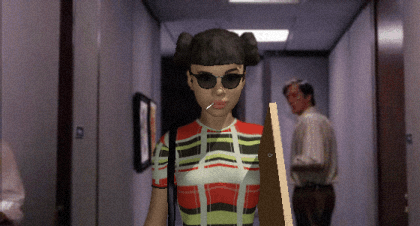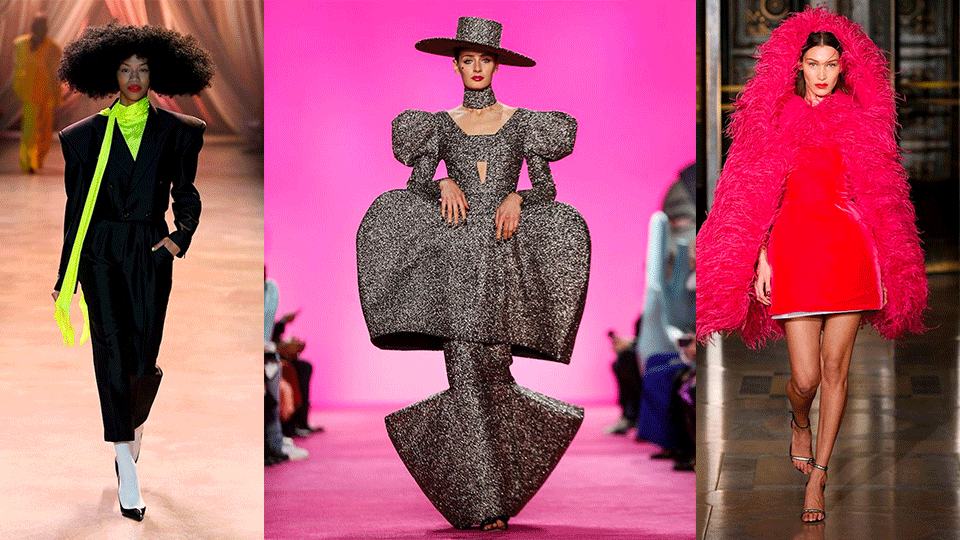- À New Wave to Fashion, À New Way of Living. Download Now on iOS Android Canada SS22
- hello@alahausse.ca
The Shape of Digitization: The aid of AI in expressing Digital Clothing
Wearable Experiments: Real-time Fan Jerseys
August 14, 2021The Good and The Bad About Fibre Optic Apparel
August 14, 2021
Written by: Dante Lusson
At this point technology in our everyday lives is inevitable. Digital commerce grew 44 percent in 2020 which is triple the growth we saw in 2019. Brands are realizing the potential of online commerce and are taking the time to make their digital spaces as user friendly as possible. Additionally, technology is being utilized in all parts of the fashion supply chain. Production, marketing, sales, you name it. The potential that artificial intelligence has in the fashion industry is massive and it could really shift our understanding and consumption of clothing.

Customer Service
In an online context AI can make the shopping experience more pleasant for users through chatbots or voice assistant devices. Amazon Lex can help you find and purchase products via the website without having to lift a finger (literally). Bots like Lex are able to engage in dialogue with customers in order to find the perfect product, leaving the shopper happy and satisfied. If the shopping is being done in person the AI can record the shopping experience through optional feedback. Furthermore it can monitor the customer while they are shopping and understand their sentiments through the products they choose to purchase. This data can be used by the brands to better their service and have an idea of what the average customer is looking for and purchasing.
The Online Retail Experience
Online shopping is often a classic hit or miss experience. The biggest difficulty of online fashion is not being able to try the garment on, therefore brands have two choices: ensure that the buyer is happy with the product from the beginning or offer an incentive that will make the return process hassle free. Right now about 30 percent of products that are ordered online are returned and 67 percent of shoppers will look into the return process before committing to a purchase. Brands will often offer free return shipping and even prematurely provide a return label for their buyers.
Forbes called returns the “single worst decision the industry has ever inflicted upon not just itself but us all” and here’s why. It is estimated that only 50 percent of returns make it back onto the racks and the rest can be difficult to track. Either they return to the manufacturer or are resold to discouners or liquidators, but ultimately the easiest (and cheapest) option is a one way ticket to the landfill. Therefore we have reached this point in the industry where garments are being produced, bought, unworn, returned, and then thrown away. This is an extremely unsustainable practice and addresses why we require a shift in the industry.
The Comeback of Personalized Fashion
Personalized fashion is often more difficult to come by as well as more expensive than its competitor fast fashion. Stitch Fix is a brand that relies on data to give their customers a personal shopper experience “other apparel retailers attempt to differentiate themselves through the lowest price or fastest shipping; we differentiate ourselves through personalization”. When they first sign up users fill out a lengthy questionnaire and through continuous feedback of the garments the data will only become more accurate. By putting their efforts into the personalized shopping experience, Stitch Fix is attempting to limit the need for returns.
Sustainable Projections in Manufacturing
Another one of the roles that AI can play in the fashion industry is on the manufacturing and production side. According to Forbes, the AI is able to make much more accurate predictions of supply and demand and has the ability to reduce errors by as much as 50 percent. The fast fashion industry relies on rapid changing trends and is known for over production therefore the role that the AI can play in waste reduction is huge.

Shopping Avatar
The Van Heusen Style Studio is a way for shoppers to try on different products without having to try them on. Remember in Clueless where Cher’s closet customizes her iconic plaid yellow outfit? Well it’s virtually that. Shoppers are able to stand in front of the AI smart mirror and use the touch screen to scroll through garments and “try them on”. The mirrors allow for users to easily switch between sizes and colours, going as far as taking photos for comparisons.

If the Shoe fits
Computer vision is another set of skills that AI brings to fashion. This essentially means that AI can see patterns in data through image processing. If you are looking for a pair of black sneakers you can input this information and the result will be a list of all the black sneakers available for purchase. All you need is a camera to take a picture of the item you are searching for and the AI will do the rest. Have you ever looked up a product and the result was targeted ads on your instagram for the next two weeks for that exact product? This is the result of the data collection and learning from AI. It has the ability to analyze your search history in order to provide you with a “hand picked” selection of the exact pieces you were looking for.
AI x Human Collab
Founders of Glitch Emily Salvador and Pinar Yanardag are paving the way for garment design in the digital realm. By utilizing what AI does best (data collection) Glitch has been able to incorporate a creative approach into digital clothing design. One of their computers collects data on vintage dress sketches, and a second computer determines if it is an original design or not. And then they get combined to create a design that is often similar to the provided data but equally as different. The computers are unable to “imagine” what textiles the dress will be made out of and this is where human collaboration comes from. By combining the experiences and emotions of humans with the creativity of AI we are seeing a completely new side of fashion.

A Shifting Industry
In an age where technology more or less runs the world it comes as no surprise that AI has made its way into the fashion industry. But instead of robots taking over we’re seeing a collaboration between humans and machines that is shedding light on a new, more sustainable industry.
Via ÀLA.HAUSSE‘s Multi-functional and Multi-purposeful Fashion Ecosystem- BUY/SELL/RENT/LEND/ (swap BETA 2021) mobile application, INDIVIDUALS & brands ( BETA 2021) are encouraged to REBUY, RESELL, REUSE and UP-CYCLE their personal “Clossets” aka Clothing Assets, along with overstock inventory and samples. Through this consumerism habit shift we indirectly slow down the urgency on fashion’s carbon footprint, aiding sustainability as a whole.
BETA Early Access Application Now Open for CA Fashion Lovers: Apply Now for LAST CALL
with Stories on www.alahausse.ca
#ALAHAUSSE #WEARYOURPURPOSE #HAUSSEPEOPLE







